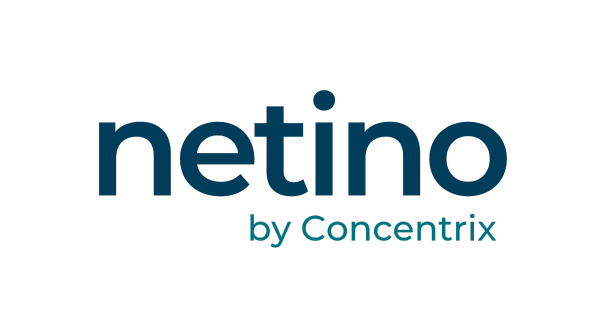Fake News: Information and Disinformation
At Netino, we are well aware of fake news and whether they are published in the comments of a video or are the subject of an article, they are plentiful online. With the pandemic, we clearly see them multiply. We are all familiar with the results of MIT’s research: on social networks, a fake news story is six times more likely to be shared than a verified story, but who spreads them, and for what purpose?

| Social networks, allies of disinformation
MIT, by studying the propagation of 126,000 unfounded rumors, proves that online, it is better to share false information to become known. Sinan Aral, the co-author of the study, states: “Lies spread significantly farther, faster, deeper, and more broadly than the truth in all categories of information, with more pronounced effects when it comes to erroneous news about politics.” Thus, a fake news story will reach an average of 20,000 people, three times faster than a verified story will reach 10,000 people. These figures, although worrying during a pandemic where distrust of vaccines and authorities is increasingly prevalent, can be explained quite simply. More spectacular, shocking information is designed to provoke a reaction and is free from the limiting constraints of “truth.” Whether one wishes to proclaim the gross invalidity of this news or whether one is shocked and agrees with it, one ends up interacting with the publication, and this pleases the algorithm!
Its success, that is, the objective to be achieved, is as follows: “To keep the user as long as possible to show him the most advertisements.” In this race for attention, the algorithm will highlight any content that is likely to push the user to react, and titles such as “A 5,000-euro bonus granted to hospitals for each person who died of Covid; cocaine kills the coronavirus; RNA vaccines modify DNA; how Bill Gates wants to control the world with his vaccines…” are designed to lead to clicks. This leads to a perpetual increase in disinformation figures. An IFOP survey reveals that 43 percent of people subscribe – by “completely agreeing” or “somewhat agreeing” – to the idea that “the Ministry of Health is colluding with the pharmaceutical industry to hide the truth about the harmfulness of vaccines from the general public.” 65 percent of French people adhere to at least one conspiracy theory, still according to IFOP.
Always playing with the algorithm, conspiracy theorists use the formats and codes that work online: memes, face-cameras, reviews of articles and videos, always with humor and benevolence. In addition, their content is published in the format of the social network. The daily newspaper Le Monde and VECU (a conspiracy page) will publish content that adheres to the same graphic charter… All of these speeches are built on an increasingly prevalent media distrust within society. This has been measured every year since 1987 by La Croix’s barometer, and according to Kantar, the solicited polling institute, the media is the institution that inspires the least confidence among the population (only 24 percent have confidence in the media), just ahead of political parties (12 percent). It is learned that 41 percent (+8 points in one year) of the population is “fairly weakly” interested, 28 percent, or “very weakly” (13 percent) in current events. The number of people who abandon traditional media in favor of social networks is also increasing, with “young people getting information 18 percent from television and 75 percent from the Internet, with a preference for social networks (40 percent of under 35s’ Internet use) over digital media from the press (30 percent).”
| Who is lying to you, and why?
The time when so-called “re-information” sites, with questionable typography and illustrations, republished each other, has long since passed. The distributors are now numerous, properly installed on social networks, and seem to be professionalizing. They have experienced strong growth on Twitter, Facebook, and YouTube in particular, but since the digital giants began to flag and even delete this content, there has been a clear shift in the means of distribution. Conspiracy theorists, at the moment when their popularity rating reached the crest of a Gaussian curve, almost disappear from traditional networks to fuel “VK, PARLER,” and other “parallel” networks. They find themselves on these platforms, and the split between them and traditional means of information has now reached its climax.
The former occupant of the White House gave us a good example of the influence of these social networks. Indeed, the president of the world’s leading power pronounced nearly 7 falsehoods or lies per day during his term, all recorded by the Washington Post. In total, there were at least 4,229. Donald Trump is thus close to the QAnon conspiracy movement, which suggests, among other things, that the world is run by pedo-satanic elites and that children are kidnapped and hidden in the basement of a pizzeria (to put it briefly). But outside of this particular case, many actors find it in their interest to create false facts from scratch.

The most well-known figures are the self-proclaimed “truth-seekers,” who often claim to be conspiracy theorists and outside the system to support their arguments. They have built a cohesive community for whom they serve as a guide. They mobilize their subscribers by entrusting them with a mission: “to reveal the truth,” against designated enemies such as Bill Gates or Emmanuel Macron. Silvano Trotta, a conspiracy theorist who had over 170,000 subscribers on his YouTube channel before it was deleted, declares at the end of his last video of 2020: “Don’t worry, we’ll make it, I embrace you all very, very tightly. Thank you for this year, you have been magnificent! You are magnificent, be aware of that. I love you, bye-bye, and see you next year.” He plays on emotions to unite them.
To convince their audience, numerous official sources are cited, truncated, and fallacious links are created. The argumentative mille-feuille technique, theorized by Gerald Bonner, is also constantly employed: the reader is drowned in a quantity of information, some verified, others completely invented, to simulate a logical reasoning and camouflage the arrangements with reality. The argument of authority is also increasingly used: guests, without recognized qualifications, are always referred to as “experts.” The confirmatory pillar of conspiracy theories remains self-validation. If content is debunked by the media, it is because the latter is serving the conspiracy, which proves that the theorist is telling the truth. The conspiracy theory is sufficient unto itself.
These figures seem convinced by their speech and think they are telling the truth. They inspire and nourish numerous neo-media outlets, such as TV libertés, Vécu, Etienne Chouard, Le Blog du Libre penseur, which in turn adhere to and share them, inspiring other individuals. False information also sometimes has a concrete political purpose. Russia, for example, is often accused of using these methods to influence elections or political decisions. In January 2017, a joint report by the CIA, FBI, and NSA confirmed Russian interference in the 2016 presidential election. According to this document, the objective was to undermine Americans’ confidence in their electoral system and to denigrate Hillary Clinton, using a powerful ally… chatbots. This is what the media “The Conversation” reports: “Between January 2015 and August 2017, Facebook linked 80,000 publications to the Russian company Internet Research Agency, which had more than 470 different accounts. A total of 50,258 Twitter accounts were also linked to Russian bots—fake accounts programmed to share false news—during the 2016 election period. Bots were responsible for over 3.8 million tweets, or about 19% of all tweets about the 2016 US presidential election. About 80% of these bots were in favor of Donald Trump, using hashtags such as #donaldtrump, #trump2016, #neverhillary, #trumppence16, and #trump.”
N'hésitez pas à partager cet article !
"Fake News: Information and Disinformation"

